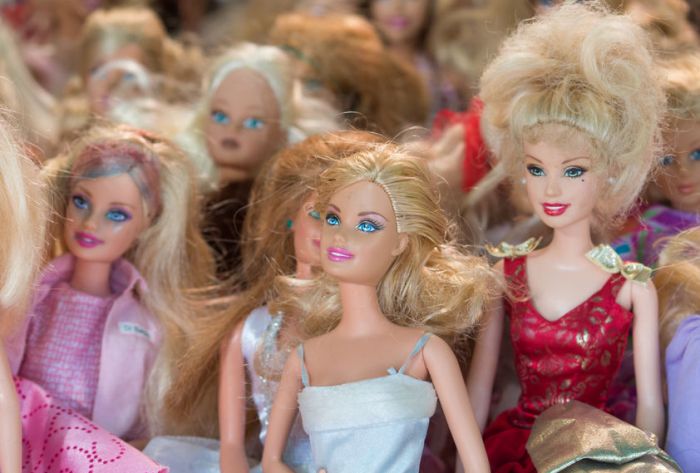
When I was a kid, much to my feminist mother’s chagrin, I adored Barbies. I spent my allowance money on Day-to-Night Barbie, Pretty-in-Pink Barbie, and Barbie and the Rockers. One entire corner of my room was drenched in Barbie pink. The Barbies’ house, built by my father, contained everything from a refrigerator with fake food, to tiny pink coat hangers, to a goddamned Barbie toilet.
Thirty years later, that same Barbie house, with a paired-down menagerie of accessories, still adorned a wall of my adult house. When my friend, Kelly, came to visit, her daughter rebranded Barbie in a more sophisticated light, referring to the dolls as “the Barbaras.” Since Barb’s over 60 years old now, I think she deserves the extra respect.
National Barbie Day, which was actually yesterday (I know, you’re pissed you missed your chance to celebrate), conjures mixed feelings for me. I’m nostalgic for the time my best childhood friend, Kim, and I spent weaving storylines inspired by our favorite soap opera, Santa Barbara. (It just now occurred to me how appropriate that title is for Barbie play.) I’m also inclined to snort at how ridiculous Barbie’s tiny waist and permanently high-heeled feet are and to ponder the effect that has on young people’s body image.
It turns out, though, that Barbie, despite her nefarious image by the 1970s, began as sort of a feminist icon. And, maybe it’s time for her to take it a step further.
The Syndrome Mag was gracious enough to publish my article, It’s National Barbie Day. Check it out and discover some little-known history about Little Miss All-Things-Pink.

Interesting take on the Barbie thing. I’ve never made the comparison before, but I wonder if the Disney princess phenomenon isn’t similar: empowering, or entrapping? Either way, there’s no denying its appeal.
Fair point on the Disney Princess comparison. I think both Barbie and the DP’s have the potential to be empowering and they are more so than they used to be. My hope is that they continue to expand and diversify their characters, supporting the social changes on the horizon.
Disney’s done a good job of making recent princesses strong and self-determining, which is great. But they’re hardly leading. We’ll know they’ve caught up to social change when we see a trans or gay prince in the usual princess role.
After my father’s recent death, we fund a lot of collectibles stored away. One was a Coke Barbie. We are not sure what to do with her.
I’m taking it this is a Coca-Cola Barbie of some sort, not one tweaking out on white powder. I’m curious about what she looks like.
Coke Barbie, LOL! You made me Google ‘Barbie on coke’. That was fun.